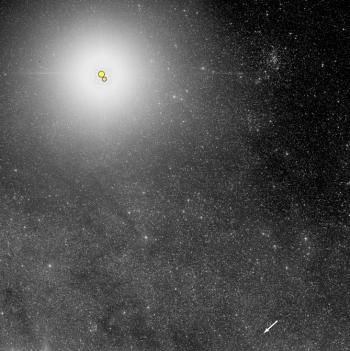 Proxima Centauri: The Closest Star
Proxima Centauri: The Closest StarExplanation: Does the closest star to our Sun have planets? No one is sure -- but you can now follow frequent updates of a new search that is taking place during the first few months of this year. The closest star, Proxima Centauri, is the nearest member of the Alpha Centauri star system. Light takes only 4.24 years to reach us from Proxima Centauri. This small red star, captured in the center of the featured image by the Hubble Space Telescope, is so faint that it was only discovered in 1915 and is only visible through a telescope. Telescope-created X-shaped diffraction spikes surround Proxima Centauri, while several stars further out in our Milky Way Galaxy are visible in the background. The brightest star in the Alpha Centauri system is quite similar to our Sun, has been known as long as recorded history, and is the third brightest star in the night sky. The Alpha Centauri system is primarily visible from Earth's Southern Hemisphere. Starting last week, the European Southern Observatory's Pale Red Dot project began investigating slight changes in Proxima Centauri to see if they result from a planet -- possibly an Earth-sized planet. Although unlikely, were a modern civilization found living on a planet orbiting Proxima Centauri, its proximity makes it a reasonable possibility that humanity could communicate with them.
| << Previous APOD | This Day in APOD | Next APOD >> |


